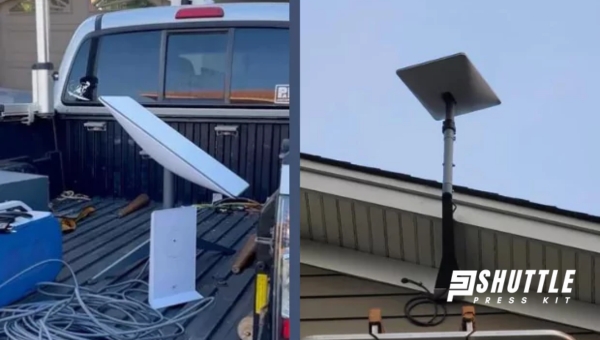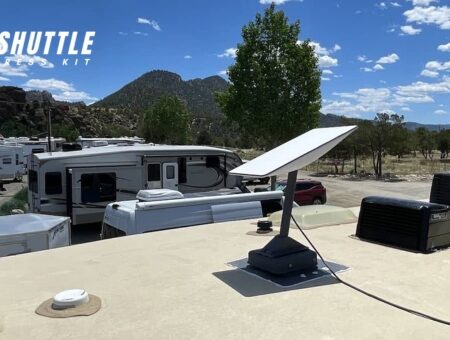Ever found yourself tangled in the web of options between Starlink’s offerings? If picking between Starlink Roam and Residential feels like choosing your favorite star in the sky, you’re not alone. In this guide titled “Starlink Roam Vs Residential: A Comparative Analysis,” I’m here to light the path, offering clarity and simplicity to help you make that all-important decision. With connectivity becoming as essential as air we breathe, getting this choice right can significantly impact your digital life.
When it comes down to deciding between Starlink Roam and Residential, it really depends on what you need. If you’re always moving or love adventuring away from home, Starlink Roam is tailored for you. It lets you use internet service in different places without changing your setup each time. On the other hand, if you spend most of your time at a fixed address and crave stability with high-speed internet, then the Residential option is designed with you in mind.
Starlink Roaming Services
Starlink has taken connectivity to the next level with its roaming services, offering users seamless internet access while on the move. This innovative service is designed for individuals who require reliable and fast internet connectivity, regardless of their location. Whether you’re traveling in remote areas, exploring off-grid locations, or simply need a stable connection away from traditional networks, Starlink’s Roaming Services ensure that your connectivity needs are met without any compromises.

Starlink Roam Services: Essential Features
Starlink Roam services extend the scope of satellite internet connectivity, offering a unique blend of flexibility and performance to users on the move. Catering primarily to travelers, remote workers, and those in under-connected regions, this service is an innovative solution for keeping connected globally. Below are the key features that make Starlink Roam standout:
- Global Internet Connectivity: Enjoy the ability to access high-speed internet in virtually any part of the world. This feature is crucial for individuals who travel frequently or live in areas where traditional broadband is not available.
- Enhanced Mobility: Starlink Roam isn’t tied to a fixed address. Whether you’re embarking on an epic road trip, sailing the high seas, or setting up camp in remote locales, your connectivity travels with you.
- Simple Setup Process: The equipment needed for accessing Starlink’s service is designed with user-friendliness in mind. Setting it up is straightforward, empowering users with quick activation without necessitating professional help.
- Reliable Internet Connection: In places where existing broadband services falter or are non-existent, Starlink provides a dependable alternative. Expect low-latency connections that accommodate video calls, online gaming, streaming services, and more efficiently.
Starlink’s proactive expansion of its satellite constellation means these features will only improve over time—with broader coverage areas and enhanced network capabilities on the horizon.
Also Read: Starlink Offer Phone Service? Discover Now!
Starlink Residential Overview
Starlink Residential is a groundbreaking service introduced by SpaceX that aims to provide high-speed internet connectivity across the globe, particularly focusing on areas with poor or no traditional internet infrastructure. This innovative service leverages a constellation of satellites deployed in low Earth orbit, facilitating broadband speeds that compete with or surpass terrestrial internet providers. Designed to be user-friendly, Starlink offers an easy installation process involving a compact satellite dish and Wi-Fi router, enabling households in even the most remote locations to access reliable and fast internet services. With its commitment to bridging the digital divide, Starlink Residential stands as a beacon of hope for enhancing global connectivity.

Key Features of Starlink Residential
Starlink, developed by SpaceX, offers a revolutionary solution to the challenge of reliable internet connectivity, especially in rural and remote areas. This satellite-based service is reshaping the broadband landscape with its promise of high-speed access worldwide. Below are the essential features that make Starlink’s home internet offering stand out:
- High-Speed Internet: Designed to provide speeds comparable to or exceeding those of traditional broadband connections, enabling seamless streaming, gaming, and work-from-home capabilities.
- Expansive Coverage: Utilizes a constellation of satellites that ensures wide-reaching internet coverage across regions typically underserved by traditional ISPs.
- Reduced Latency: Achieves lower latency rates than traditional satellite internet services, facilitating improved experiences for real-time applications and communications.
- Simple Setup Process: Empowers homeowners with an easily installable system that does not necessitate professional installation, streamlining the setup for quick use.
- Network Scalability: As more satellites join the constellation, Starlink’s network is poised for enhancements in capacity and reliability benefiting its user base significantly.
Starlink Roam vs. Starlink Residential: Comparison

| Feature | Starlink Roam | Starlink Residential |
|---|---|---|
| Mobility | Available | Not Available |
| Location | Can use in different locations | Restricted to registered home address |
| Equipment | Portable equipment | Non-portable equipment |
| Internet Speeds | Vary, usually lower than Residential | High-speed, up to 150 Mbps |
| Availability | Limited areas | Available in many regions across the globe |
| Setup Process | Expected to be easy | DIY Setup but may require some technical knowledge |
| Use-case | Ideal for travel, camping, etc. | Ideal for home, office use |
Performance
Starlink Roam typically delivers slower internet speeds compared to the more robust Starlink Residential service. This difference in performance might stem from physical and technological limitations inherent in designing devices meant for mobility. Factors such as smaller dish size and the complexities of maintaining a stable connection on the move could contribute to these reduced speeds and increased latency.
In contrast, Starlink Residential provides users with much higher internet speeds, reaching up to 150 Mbps, along with lower latency levels. The residential service benefits greatly from a larger antenna that enhances signal reception and stability, ensuring efficient performance across various weather conditions and more remote locations. These advantages make residential setups more reliable for continuous, stationary use where consistent connectivity is crucial.
Also Read: Amazon’s Project Kuiper vs Starlink: Showdown Unpacked
FAQs
Is Starlink Roam as fast as Starlink Residential?
Starlink Roam offers speeds comparable to Starlink Residential, providing fast and reliable internet access on the go.
Can I use my existing Starlink Residential hardware for Starlink Roam?
Existing Starlink Residential hardware can be used for Starlink Roam, making it a seamless transition for customers.
How does weather affect Starlink Roam compared to Residential?
Weather can impact both Starlink Roam and Residential, but Roam’s portable design may make it more susceptible to signal interruptions in extreme weather conditions.
What are the costs associated with switching from one service to another?
The costs of switching from one service to another may vary depending on any applicable fees or upgrade charges, so it is recommended to contact Starlink directly for pricing information
Also Read: Starlink Volcano Mount Guide: Easy DIY Installation Tips
Conclusion
In examining Starlink Roam versus Residential, it’s clear that each service caters to distinct user needs and preferences. Starlink Roam emerges as the ultimate choice for individuals and professionals constantly on the move, needing reliable internet access across varied locations.
On the other hand, Starlink Residential is tailored for stationary users, offering a stable and high-speed connection from a fixed location. While Roam prioritizes flexibility and global connectivity, Residential focuses on providing uninterrupted internet service to homes and businesses.
